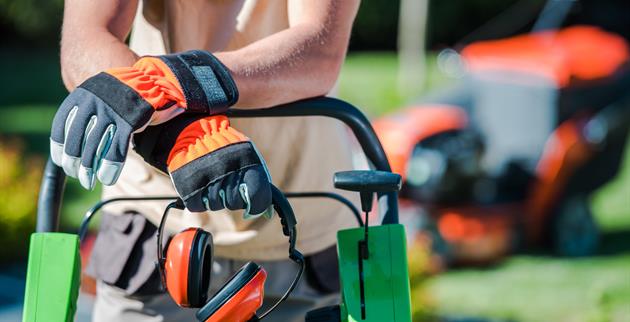

Many summers revolve around safe, outdoor fun, but don’t let the chores become emergencies.
Even if you have been mowing injury-free for decades, these safety tips can help you continue to do so for years to come!
In the United States, more than 80,000 emergency room visits are attributed to mower-related injuries; 9,000 of these visits are for children, according to the Consumer Product Safety Commission.
That is a troubling statistic that hasn’t gone down in recent years, either. Every year, more and more injuries occur and they aren’t just personal injuries, either!
Before mowing the lawn
- Make sure children are indoors or at a safe distance from the area you plan to mow.
- Know how to operate your mower by following its manual and instructions.
- Check for proper conditions:
- Don’t mow during bad weather, such as thunderstorms
- Do not mow wet grass
- Do not mow in the dark
- Clear the mowing area of any objects such as branches, rocks and toys.Your mower could accidentally pick them up and be thrown by the lawn mower blades injuring you or others around you, even your home!
- Make sure the protective guards, shields, grass catcher, and other types of safety equipment are placed properly on the mower and your mower is in good condition.
- Never allow children to ride as passengers.
While mowing the lawn
- Wear proper footwear (closed-toed shoes, slip-proof, tight fitting clothing), safety goggles or glasses, and hearing protection.
- Watch for objects that could be picked up and thrown, as well as hidden dangers.Tall grass can hide things with ease. Use caution when approaching corners, trees, or other objects that might block your view.
- If the mower strikes an object, stop and turn the mower off, then inspect the mower.
- Do not pull the mower backwards or mow in reverse unless it is absolutely necessary, and be aware of children if you do.
- Use caution when mowing a slope.
- Push-mowers: mow across the face of slopes, not up and down to avoid slipping under the mower and into the blades.
- Riding mowers: mow up and down slopes, not across, to avoid tipping over.
Always turn off the engine and allow it to cool before refueling, too.
It is also important to teach your child how to use the lawn mower, if you feel they are ready and have the maturity and coordination, too!
According to the American Academy of Pediatrics, a child who is 12 or older is considered old enough to push a lawn mower, but should be 16 or older to ride one alone. They must be willing and able to follow the same safety rules mentioned above, too; especially if you are hoping to leave them unsupervised!
Many summers revolve around safe, outdoor fun, but don’t let the chores become emergencies.
This information is intended for educational purposes only and is not legal advice and/or an authoritative guide.